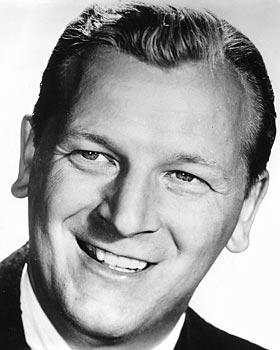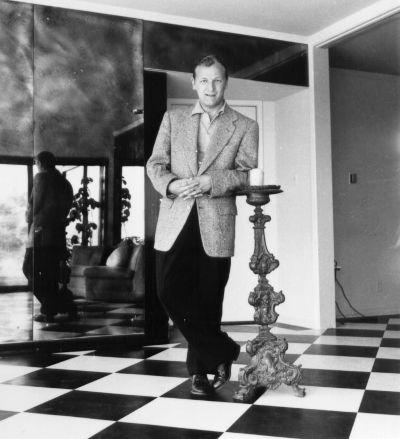Les Baxter (Leslie Thompson Baxter)

Les Baxter studied piano at the Detroit Conservatory before moving to Los Angeles for further studies at Pepperdine College. From 1943 on he was playing tenor and baritone saxophone for the Freddie Slack big band. Abandoning a concert career as a pianist, he turned to popular music as a singer. At the age of 23 he joined Mel Tormé’s Mel-Tones, singing on Artie Shaw records such as “What Is This Thing Called Love?”. Les Baxter then turned to arranging and conducting for Capitol Records in 1950, and conducted the orchestra of two early Nat King Cole hits, “Mona Lisa” and “Too Young”. In 1953 he scored his first movie, the sailing travelogue Tanga Tika. With his own orchestra, he released a number of hits including “Ruby” (1953), “Unchained Melody” (1955), “The Poor People of Paris” (1956) and is remembered for a version of “Sinner Man” (1956), definitively setting the sound with varying tempos, orchestral flourishes, and wailing background vocals. “Unchained Melody” was the first million seller for Baxter, and was awarded a gold disc. “The Poor People of Paris” also sold over one million copies. He also achieved success with concept albums of his own orchestral suites: Le Sacre Du Sauvage, Festival Of The Gnomes, Ports Of Pleasure, and Brazil Now, the first three for Capitol and the fourth on Gene Norman’s Crescendo label. The list of musicians on these recordings includes Plas Johnson and Clare Fischer.[citation needed] Baxter also wrote the “Whistle” theme from the TV show Lassie.
In the 1960s, Les Baxter formed the Balladeers, a conservative folk group in suits that at one time featured a young David Crosby. Later he used some of the same singers from that group for a studio project called The Forum. They had a minor hit in 1967 with a rendition of “River is Wide” which implemented the Wall of Sound technique originally developed by Phil Spector. He worked in radio as musical director of The Halls of Ivy and the Bob Hope and Abbott and Costello shows. Like his counterparts Henry Mancini and Lalo Schifrin, Baxter worked in films in the 1960s and 1970s. He worked on movie scores for B-movie studio American International Pictures where he composed scores for Roger Corman’s Edgar Allan Poe films and other horror and beach party films including House of Usher, The Pit and the Pendulum, The Raven, Muscle Beach Party and Beach Blanket Bingo. He also composed a new score for the theatrical release of the 1970 horror film Cry of the Banshee after AIP rejected Wilfred Josephs original one. Howard W. Koch recalled that Baxter composed, orchestrated and recorded the entire score of The Yellow Tomahawk (1954) in a total of three hours for $5,000. When soundtrack work fell off in the 1980s, he scored music for theme parks such as SeaWorld. Les Baxter died in Newport Beach, California at the age of 73. Survived by his daughter Leslie, he was buried at Pacific View Memorial Park, in Corona del Mar, California.
Born
- March, 14, 1922
- USA
- Mexia, Texas
Died
- January, 15, 1996
- USA
- Newport Beach, California
Cemetery
- Pacific View Memorial Park
- Corona del Mar, California
- USA



